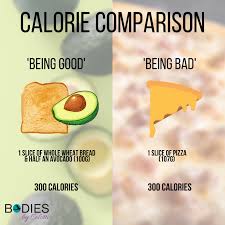
This method was first used by the ancient Chinese, Romans, Indians and others. Buddha instructed the world about salt storage and collection in the early fifth century BC. The Romans used ceramic containers (called briquetage) to collect the brine. Concentrated salt was smashed up by workers who then removed any impurities. The brine was then placed in shallow pans. They were then set on clay pillars over a peat fire. They then sold the sea salt powdered to dried workers to the New World colonists. In the New World, slaves came from Africa to rake salt at various islands in West Indies like the Bahamas and Turks and Caicos Islands.
While most people know about table salt, not everybody knows how sea Salt is made. Table salt's main ingredient is sodium chloride. However, sea salt contains other minerals like magnesium, iron and calcium. These minerals are found in trace amounts in sea salt, and they are incorporated in the salt crystals. Although it is best not to consume this mineral in excess, adding a small amount to your dishes will provide additional nutrients and nutrition.

The most popular type of salt is sea salt. It comes from warm regions and is harvested by filling man-made salt pools with salt water, and then waiting for it to evaporate. The crystals will form when the water evaporates out of the man-made pool. These man-made pool are known as "saltworks". The process of harvesting salt takes several billions of years, and the salt is harvested in different ways.
Sea salt production is a complex process. The first step in sea salt production is extraction of seawater. The first step is to evaporate the water from the ocean. The water is allowed to remain in the water to dry and become concentrated. Once this is completed, the sea salt is ready to be sold. The final product is then labeled with the unrefined and refined labels. Unrefined sea salt may be gray or contain trace minerals or marine bacteria that contribute to its complex flavor.
The process of harvesting sea salt is very simple. The salt crystals formed at the bottom and are almost dried. The impurities are removed by pouring off water and scraping off the top layer of the salt. This is a great way to get sea salt. It is affordable and widely accessible. It is readily available in many countries. Once harvested, the salt can be used for human consumption. Its uses are endless.

Extracting salt out of the sea is the exact same process as extracting salt out of river water. The process for each is however different. Some sea salts are taken from seawater, while some are extracted from the ground. The salt is extracted using chemicals in the second case. To obtain iodine, minerals are removed from seawater. The salt is not only enriched with iodine but also has minerals removed to make it more digestible.
FAQ
How do I get hired as a chef?
To get a job as chef, you must first complete a culinary arts degree. The next step is to join a professional association like the American Culinary Federation. This organization provides certification exams and offers networking opportunities.
What is the best way to store leftovers?
Leftovers are usually stored in Tupperware containers. These containers keep foods fresh and prevent odors from forming. They keep foods warmer for longer. Remaining food can be frozen in freezer bag. When freezing food, place the bag inside another freezer bag so that air doesn't escape. Once food has been frozen properly, seal it with a ziplock bag.
How much does it cost for you to learn culinary arts?
You will find that the price to study culinary arts is variable. A four-year degree usually costs around $40,000. A two-year associate's level degree can cost less than $5,000. Tuition rates vary depending on what program you choose. The prices charged by private institutions are generally higher than the public.
Is it possible to be self-taught?
Yes, you can be a self-taught cook! The joy of cooking is something that everybody enjoys doing, no matter their skill level. You can learn to cook by starting at home. Start small with things like making pancakes or spaghetti sauce for your dinner. You can learn the most by trying new recipes and making mistakes. You might make a few errors along the way.
The time it takes to learn to cook can vary from just a few hours up to several weeks, depending upon your skill level. Cooking is more than following recipes. There are so many ways to prepare food.
How do I become a Chef?
There are many ways to become a chef. Begin by enrolling at a community college. Consider attending culinary school. Finally, consider a paid internship.
What is the difference between a chef & a cook?
A chef prepares food for other people. A cook prepares food for himself or herself. Although both jobs require you to prepare food, a chef is more involved in serving customers. This means they may have to decide what to serve guests based on their preferences. Cooks don't interact with customers. He or she makes sure that the food is delicious before serving it.
How much does culinary school cost?
The costs of culinary school can vary depending on where and how long it takes. Average tuition costs between $10,000 and $30,000. The majority of students graduate with around $20,000 in student debt. However, some programs offer scholarships, grants, and work-study opportunities.
Statistics
- The median pay for a chef or head cook is $53,380 per year or $25.66/hour, according to the U.S. Bureau of Labor Statistics (BLS). (learnhowtobecome.org)
- You'll be amazed that over 90% of CIA students receive scholarships and grants to finish their culinary studies. (ischoolconnect.com)
- According to the BLS, chefs earn $58,740 a year. (learnhowtobecome.org)
External Links
How To
How to make a perfect omelet
Omelets are a favorite breakfast food of mine. But how do you create them perfectly? Many different recipes and methods have failed to work for me. So today, I want to share some tips and tricks with you so you can make your own delicious and fluffy omelets every morning.
When making omelets, it is important to be aware that eggs can be temperamental. Eggs must be purchased fresh, preferably organic, and kept chilled until ready for cooking. You must keep them cool enough to allow the whites to form properly and the yolks to become too runny if they're not kept at the right temperature. Your omelets will look strangely colored if this happens. If you intend to cook your eggs immediately, it's best to use room-temperature egg.
You can also separate the egg before you add it to the pan. The yolk and white should not be mixed together as this can cause the omelet's curdle.
You might burn the bottom of the egg if you place the egg directly on the stovetop. This could ruin the texture of your omelet. Instead, place the egg in the microwave for 10 second before you put it in the skillet. The microwave heat cooks your egg just right, without it becoming too soft.
Next, let us talk about how to mix the eggs. You want to mix the eggs thoroughly before you add them. You can do this by turning the bowl of your mixer upside down. Now shake the bowl vigorously. The egg will be thoroughly mixed in the bowl as the air is whipped.
Now comes the fun part: adding the milk to your mixture. The first step is to pour half of the milk in the beaten eggs. Next, fold the eggs into the remaining milk. Don't worry if there are still streaks of egg visible; these streaks will disappear once you flip the omelet.
After folding the eggs, place the pan on medium heat and wait for the oil to start sizzling. Once the oil begins to heat, add 1/4 cup butter and swirl the pan to coat it. The lid should be carefully opened. Sprinkle salt in the pan. A pinch of salt will help prevent the omelet from sticking to the pan.
Once the omelet has formed completely, cover the pan and let it set for a few minutes. Use a spatula to flip the omelet or turn the pan upside-down. Cook the other half for another minute. Remove the omelet from the pan and serve immediately.
This recipe works best when you use whole milk.